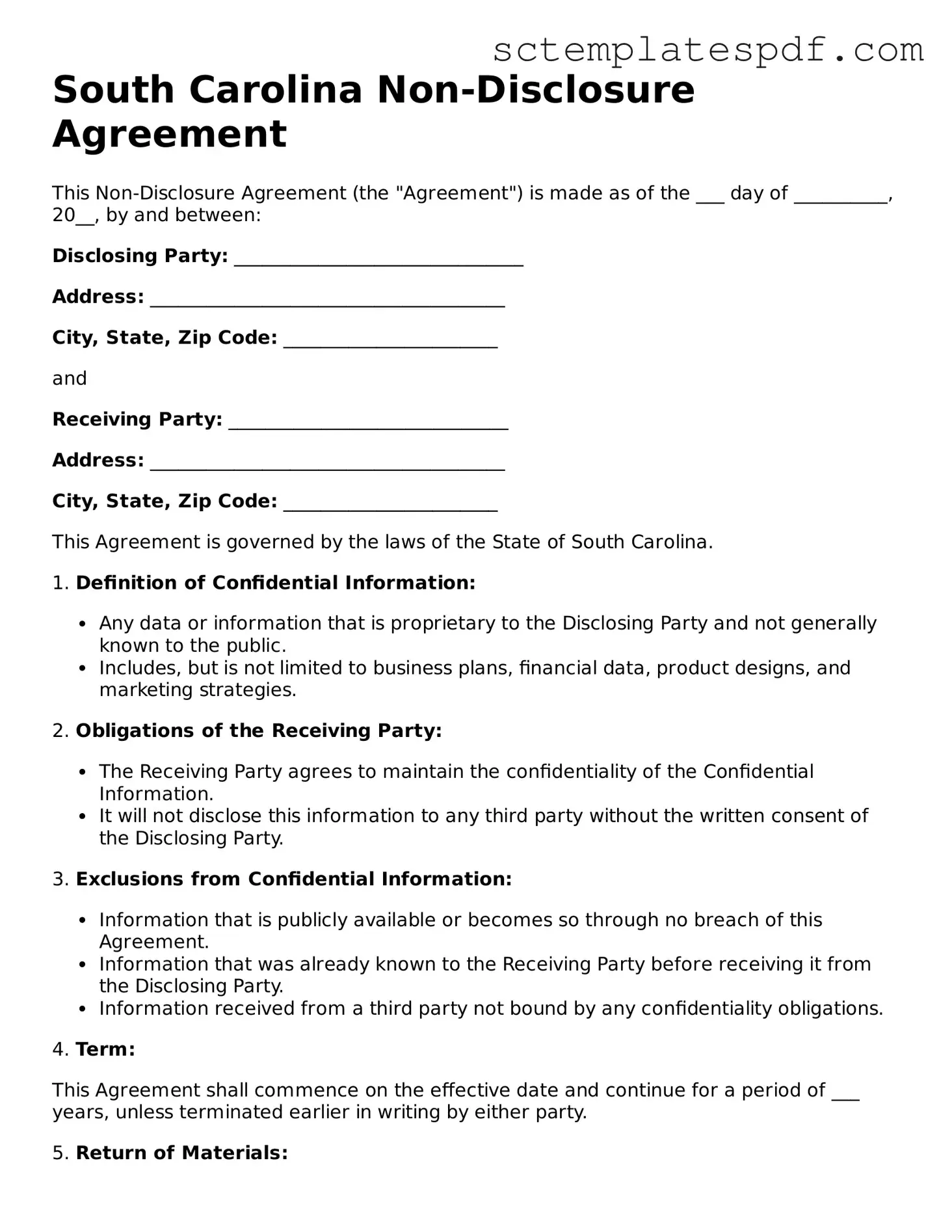Valid South Carolina Non-disclosure Agreement Document
A South Carolina Non-disclosure Agreement (NDA) is a legal document designed to protect sensitive information shared between parties. By signing this agreement, individuals or businesses commit to keeping certain information confidential. If you need to safeguard your proprietary information, consider filling out the form by clicking the button below.
Fill Out Your Non-disclosure Agreement
